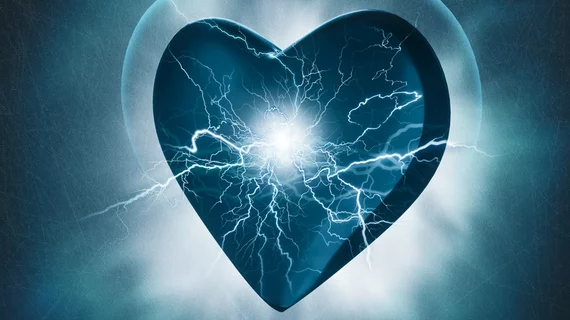Cardiac MRI, angiography produce similar downstream event rates
Patients with stable coronary artery disease (CAD) who were evaluated with either cardiac magnetic resonance (CMR) or conventional angiography showed similar rates of myocardial infarction and death at one and three years of follow-up, according to a study published in JACC: Cardiovascular Imaging.
Researchers led by Dominik Buckert, MD, with University Hospital Ulm in Germany, randomized 200 patients to angiography or adenosine stress CMR. In all, 45.9 percent of the patients undergoing angiography received revascularization compared to 28.1 percent of the patients in the CMR group.
At one year, the composite endpoint of death or MI occurred in 3.1 percent of people in the angiography group and 4.2 percent of those who were managed with CMR—a nonsignificant difference. Two years later, the event rates increased to 4.1 and 9.4 percent, respectively.
Buckert et al. noted a quality-of-life questionnaire showed a significant benefit of CMR at one year, but the slightly higher rate of cardiac events failed to demonstrate noninferiority for that approach.
“The clinical utility of this strategy will improve with advances in technology and adherence with pharmacological and lifestyle interventions,” wrote the authors of an accompanying editorial. “For now, invasive coronary angiography is the standard of care for decision making, but watch this space.”
Read more from Health Imaging below:

